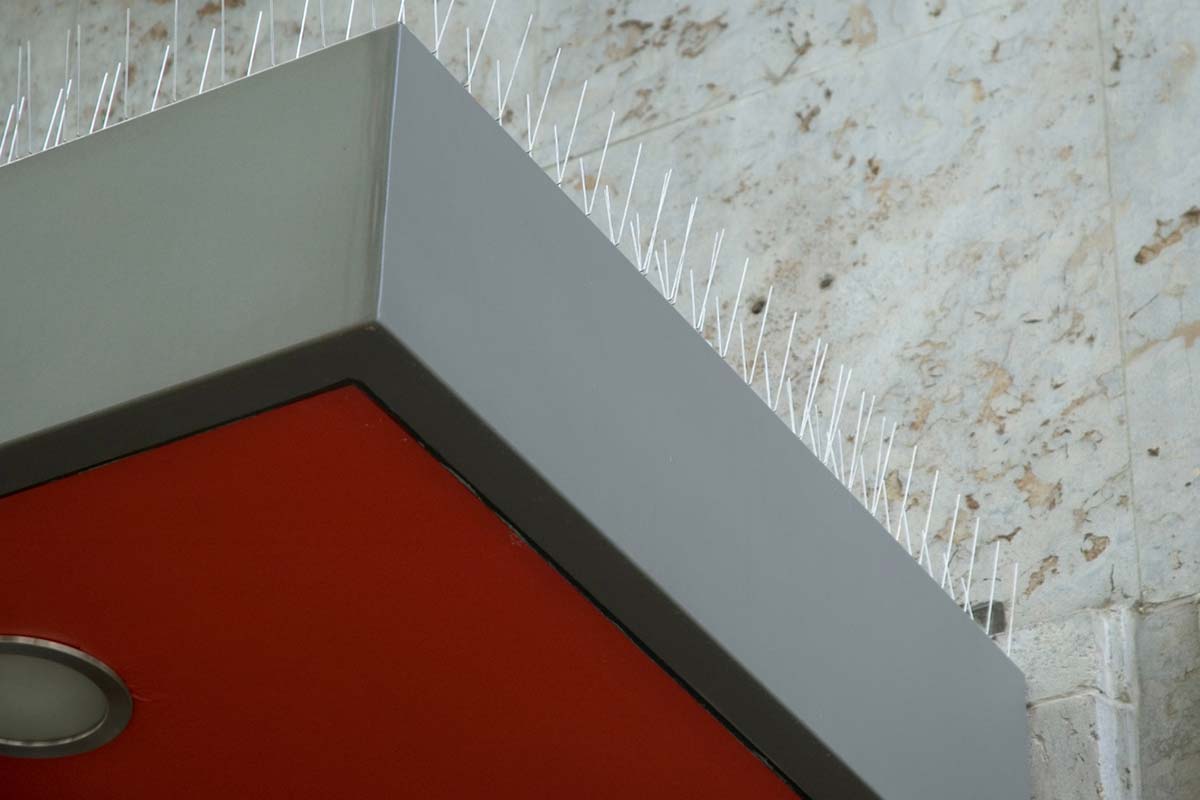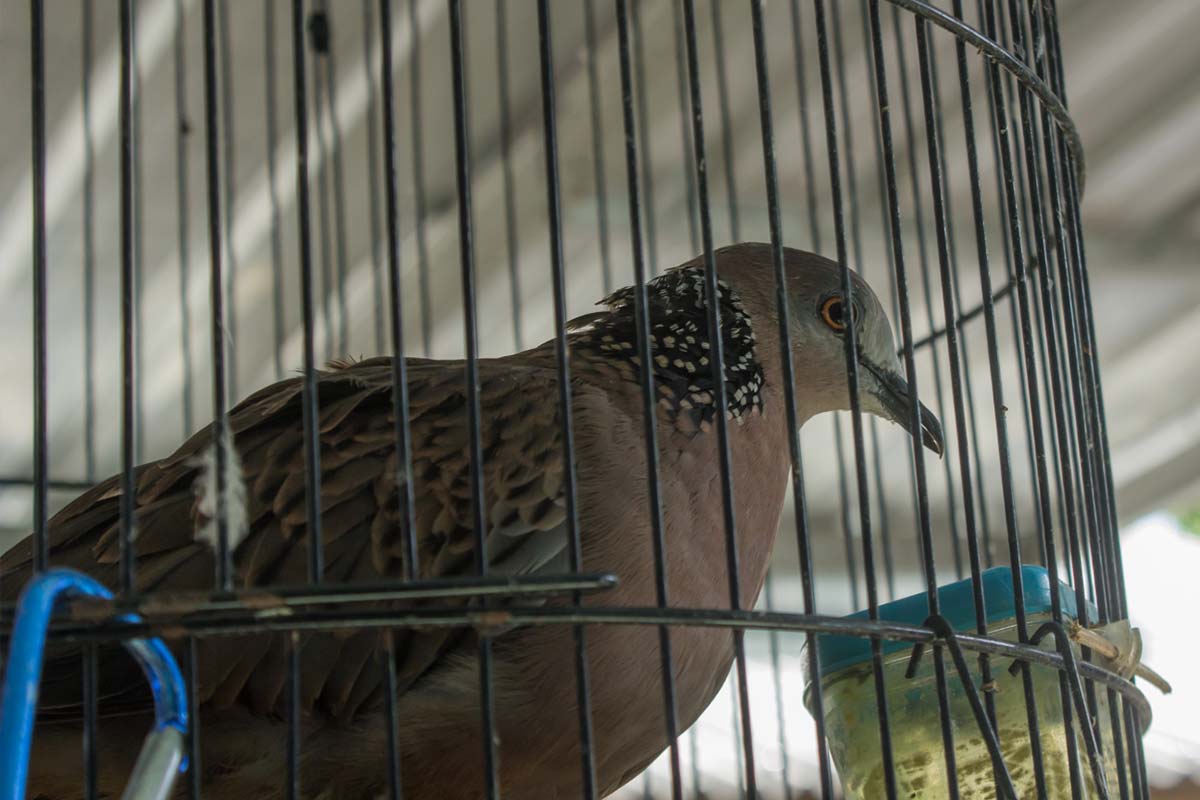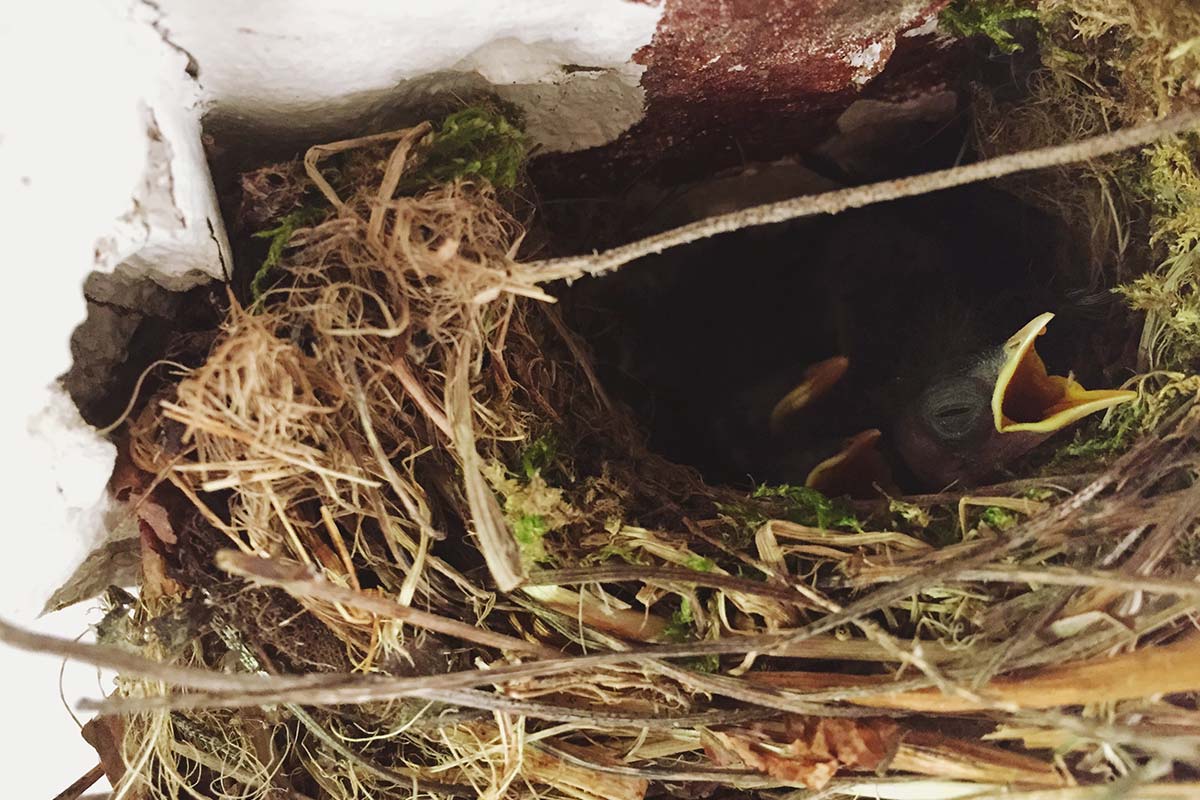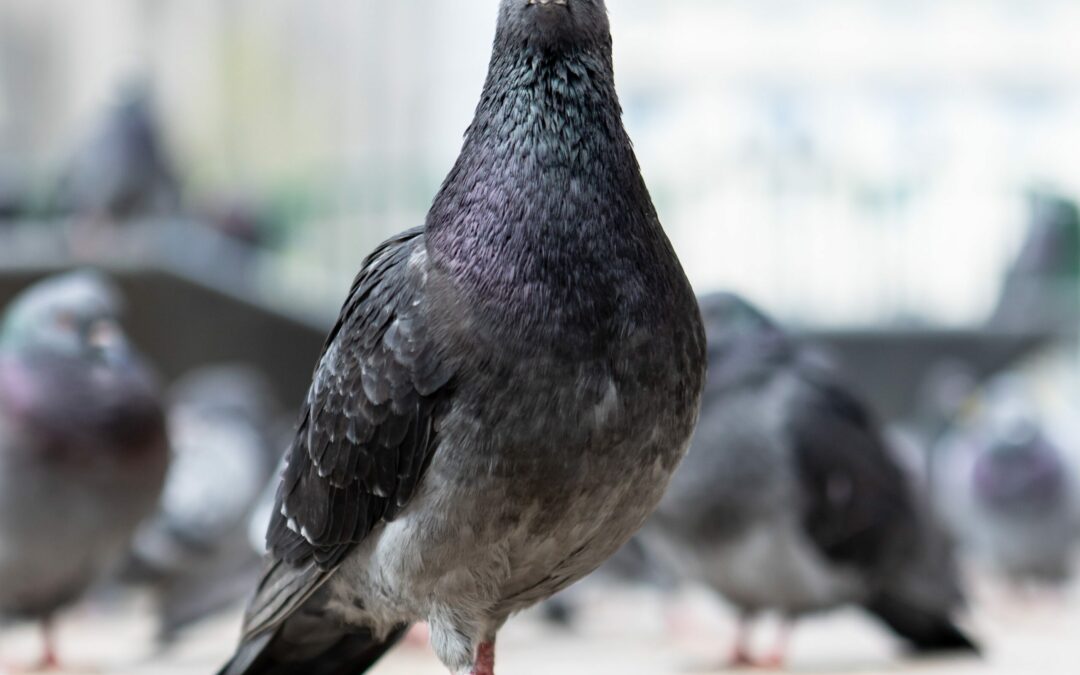
by Pigeon Patrol | Jun 8, 2025 | Bird Spikes, Pigeon Predators, Pigeon Spikes, Pigeons in the News
The steps of City Hall, once a symbol of civic pride, are now stained with something far less noble—pigeon droppings. A growing population of urban pigeons has turned the historic building into a nesting ground and bathroom, much to the frustration of city workers and residents.
“It’s absolutely disgusting,” said Angela Simmons, a clerk at the records office. “Every morning, we have to dodge piles of droppings just to get to the front door. Some days I have to bring a change of shoes.”
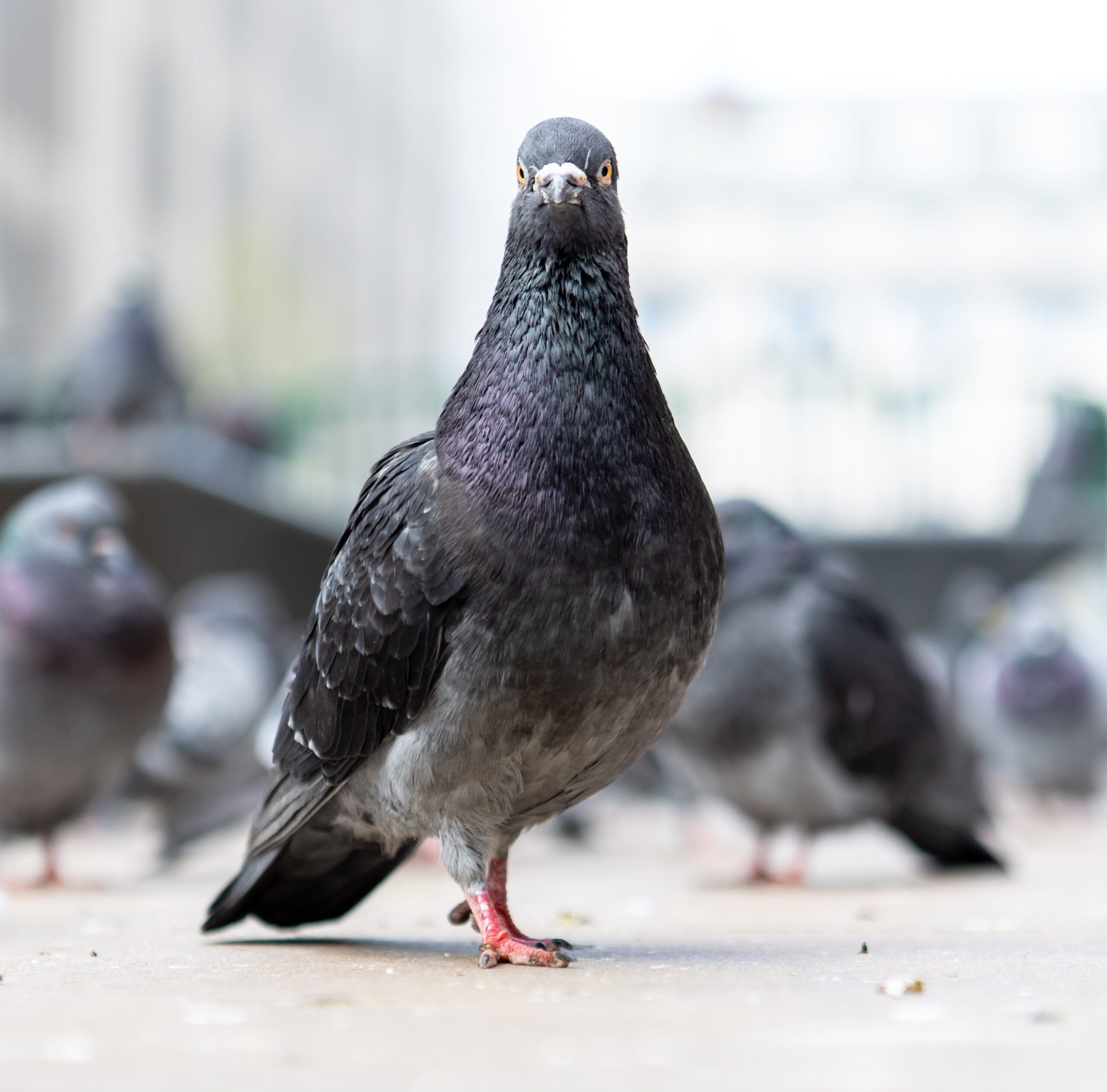
A closeup shot of a Feral pigeon in a city
The Department of Public Health has issued a warning about potential respiratory illnesses associated with dried pigeon feces, including histoplasmosis and cryptococcosis, both of which can cause serious lung infections.
Maintenance crews are power-washing the building’s steps twice a week, but it hasn’t been enough. “We’re just chasing the problem,” said Facilities Manager Larry Cho. “Until we deal with the birds themselves, we’ll keep mopping up after them.”
City Council is expected to vote next Tuesday on a proposed ordinance that would fund humane deterrents such as bird netting, sloped ledges, and the installation of owl decoys.
Pigeon Patrol Products & Services is the leading manufacturer and distributor of bird deterrent (control) products in Canada. Pigeon Patrol products have solved pest bird problems in industrial, commercial, and residential settings since 2000, by using safe and humane bird deterrents with only bird and animal -friendly solutions. At Pigeon Patrol, we manufacture and offer a variety of bird deterrents, ranging from Ultra-flex Bird Spikes with UV protection, Bird Netting, 4-S Bird Gel and the best Ultrasonic and audible sound devices on the market today.
Best Types of Pigeon Repellent
- Bird Spikes– Pigeons can’t land on surfaces with bird spikes—perfect for ledges, sills, signs, and fences.
Shop Bird Spikes: https://www.pigeonpatrol.ca/bird-spikes/
- Bird Sound Deterrents / Ultrasonic Repellers– Emit high-frequency sound to drive pigeons away without harming them.
Browse Ultrasonic Bird Repellers: https://www.pigeonpatrol.ca/bird-repeller/
- Pigeon Netting– Blocks pigeons from accessing nesting zones permanently.
See Pigeon Netting: https://www.pigeonpatrol.ca/bird-netting/
Canada’s top wholesaler for bird deterrent products for twelve consecutive years.
Contact us at 1- 877– 4– NO-BIRD, (604) 585-9279 or visit our website at https://www.pigeonpatrol.ca/
Bird Gone, Pigeon Gone, Pigeon problems, pigeon spikes, 1-877-4NO-BIRD, 4-S Gel, Bird Control, Pigeon Control, bird repellent, Bird Spikes, sonic bird repellent, stainless steel bird spikes, bird spikes Vancouver, Ultra Sonic Bird Control, Bird Netting, Plastic Bird Spikes, Canada bird spike deterrents, Pigeon Pests, B Gone Pigeon, Pigeon Patrol, pest controller, pest control operator, pest control technician, Pigeon Control Products, humane pigeon spikes, pigeon deterrents, pigeon traps, Pigeon repellents, Sound & Laser Deterrents, wildlife control, raccoon, skunk, squirrel deterrent, De-Fence Spikes, Dragons Den, Pigeon, Pigeon Patrol, Pigeons Roosting, Vancouver Pigeon Control, Bird Spikes, Bird Control, Bird Deterrent, Pigeon Deterrent, Surrey Pigeon Control, Pest, Seagull deterrent Vancouver Pigeon Blog, Birds Inside Home De-fence, Pigeon Nesting, Bird Droppings, Pigeon Dropping, woodpecker control, Keep The Birds Away, Birds/rats, seagull, pigeon, woodpecker, dove, sparrow, pidgeon control, pidgeon problem, pidgeon control, flying rats, pigeon Problems, bird netting, bird gel, bird spray, bird nails, bird guard, Pigeon control, Bird deterrents, Pigeon deterrents, Bird control, solutions, Pigeon prevention, Pigeon repellent, Bird proofing, Pest bird management, Pigeon spikes, Bird netting, Humane bird control, Bird exclusion, Urban bird control, Anti-roosting devices, Pigeon removal, Bird barriers
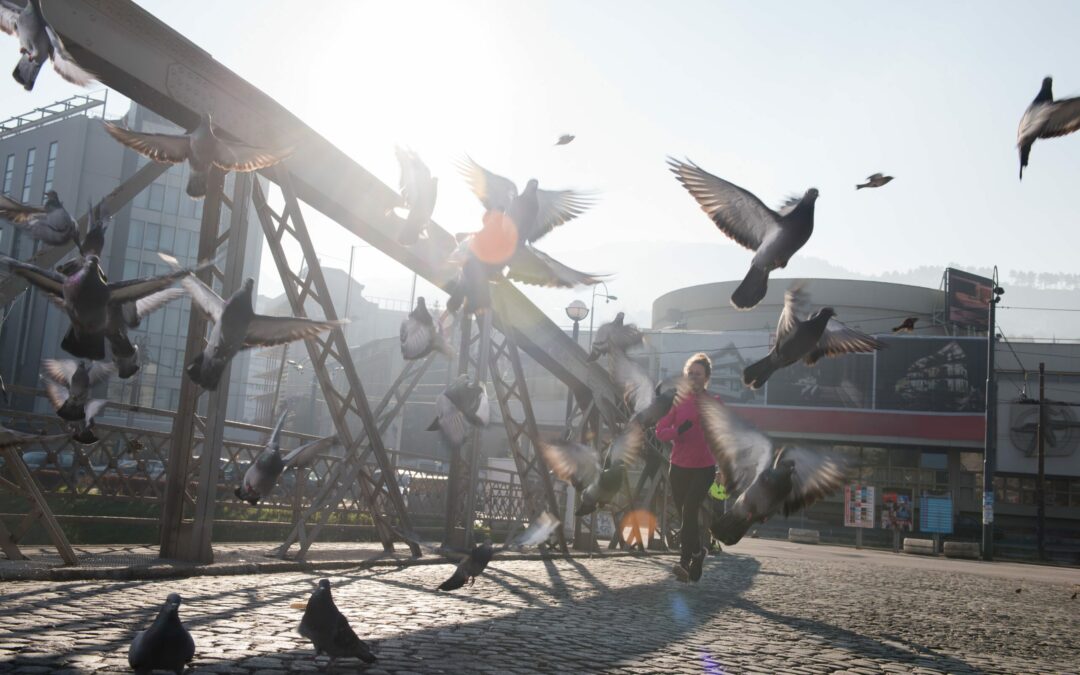
by Pigeon Patrol | Jun 8, 2025 | Pigeon Control, Pigeon Droppings, Pigeon Spikes, Pigeons in the News, Sound Deterrent
The Brighton Clock Tower, a proud piece of the city’s 19th-century heritage, is under siege. Not by vandals or weather—but by pigeons. The acidic nature of their droppings is slowly eroding the sandstone structure, prompting alarm from conservationists and city officials alike.
“The pigeons have turned this into their personal toilet,” said heritage consultant Roger Fairbanks, shaking his head. “And the worst part is the damage is cumulative. What’s already been lost can’t be restored.”

Pigeons!!!
According to the Brighton Historical Society, the tower has not undergone a full cleaning in over five years. Recent inspections revealed black crusted layers of guano on upper ledges and a corrosion ring forming around the base.
Local residents are upset by what they see as neglect. “It’s embarrassing,” said Anna Pritchard, who brings tourists to the area. “They ask me about the clock, and I’m afraid to tell them what’s actually on it.”
City engineers are now weighing the cost of installing anti-roosting spikes and motion-activated deterrents. Meanwhile, experts warn that if the situation isn’t addressed soon, the damage could become irreversible.
Pigeon Patrol
Pigeon Patrol Products & Services is the leading manufacturer and distributor of bird deterrent (control) products in Canada. Pigeon Patrol products have solved pest bird problems in industrial, commercial, and residential settings since 2000, by using safe and humane bird deterrents with only bird and animal -friendly solutions. At Pigeon Patrol, we manufacture and offer a variety of bird deterrents, ranging from Ultra-flex Bird Spikes with UV protection, Bird Netting, 4-S Bird Gel and the best Ultrasonic and audible sound devices on the market today.
Best Types of Pigeon Repellent
- Bird Spikes– Pigeons can’t land on surfaces with bird spikes—perfect for ledges, sills, signs, and fences.
Shop Bird Spikes: https://www.pigeonpatrol.ca/bird-spikes/
- Bird Sound Deterrents / Ultrasonic Repellers– Emit high-frequency sound to drive pigeons away without harming them.
Browse Ultrasonic Bird Repellers: https://www.pigeonpatrol.ca/bird-repeller/
- Pigeon Netting– Blocks pigeons from accessing nesting zones permanently.
See Pigeon Netting: https://www.pigeonpatrol.ca/bird-netting/
Canada’s top wholesaler for bird deterrent products for twelve consecutive years.
Contact us at 1- 877– 4– NO-BIRD, (604) 585-9279 or visit our website at https://www.pigeonpatrol.ca/
Bird Gone, Pigeon Gone, Pigeon problems, pigeon spikes, 1-877-4NO-BIRD, 4-S Gel, Bird Control, Pigeon Control, bird repellent, Bird Spikes, sonic bird repellent, stainless steel bird spikes, bird spikes Vancouver, Ultra Sonic Bird Control, Bird Netting, Plastic Bird Spikes, Canada bird spike deterrents, Pigeon Pests, B Gone Pigeon, Pigeon Patrol, pest controller, pest control operator, pest control technician, Pigeon Control Products, humane pigeon spikes, pigeon deterrents, pigeon traps, Pigeon repellents, Sound & Laser Deterrents, wildlife control, raccoon, skunk, squirrel deterrent, De-Fence Spikes, Dragons Den, Pigeon, Pigeon Patrol, Pigeons Roosting, Vancouver Pigeon Control, Bird Spikes, Bird Control, Bird Deterrent, Pigeon Deterrent, Surrey Pigeon Control, Pest, Seagull deterrent Vancouver Pigeon Blog, Birds Inside Home De-fence, Pigeon Nesting, Bird Droppings, Pigeon Dropping, woodpecker control, Keep The Birds Away, Birds/rats, seagull, pigeon, woodpecker, dove, sparrow, pidgeon control, pidgeon problem, pidgeon control, flying rats, pigeon Problems, bird netting, bird gel, bird spray, bird nails, bird guard, Pigeon control, Bird deterrents, Pigeon deterrents, Bird control, solutions, Pigeon prevention, Pigeon repellent, Bird proofing, Pest bird management, Pigeon spikes, Bird netting, Humane bird control, Bird exclusion, Urban bird control, Anti-roosting devices, Pigeon removal, Bird barriers
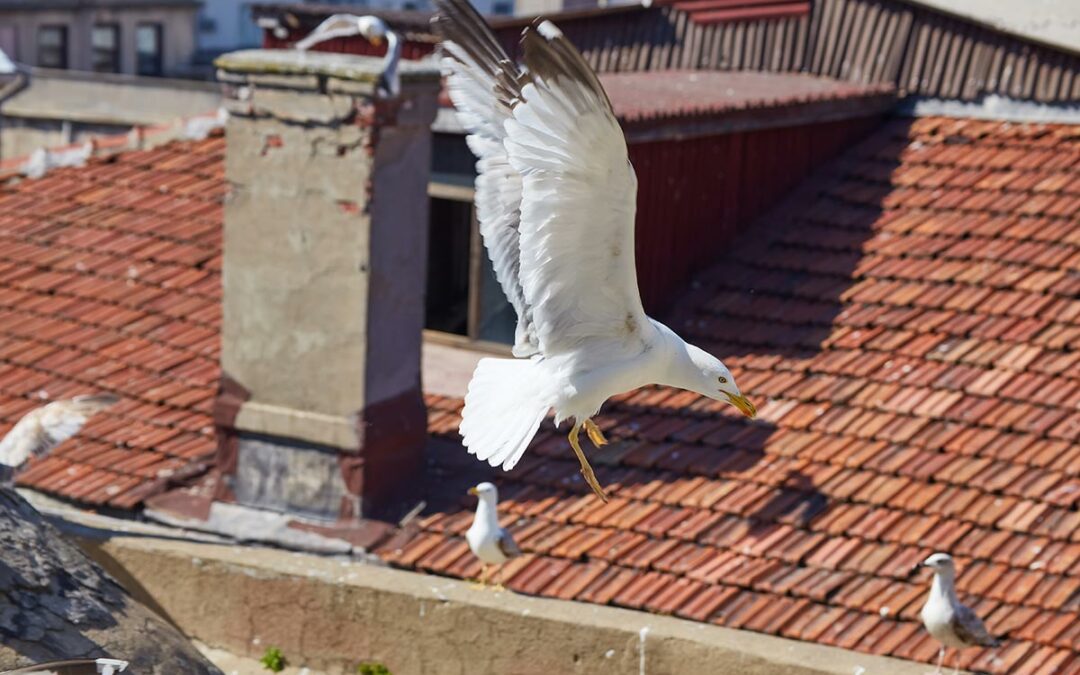
by Pigeon Patrol | Jun 4, 2025 | Animal Deterrent Products, Bird Deterrent Products, Bird Netting, Bird Spikes, Fence Spikes, Pigeon Control, Pigeon Patrol's Services, Pigeon Spikes, Pigeons, Sparrows, UltraSonic Bird Control
Pigeons are persistent birds—once they decide to roost, they can cause property damage, health hazards, and messy cleanup. The good news? You have lots of effective pigeon repellent options to choose from.
In this guide, we’ll cover the top pigeon repellents, when to use them, and how to combine products for the best results.
Best Types of Pigeon Repellent
- Bird Spikes – Pigeons can’t land on surfaces with bird spikes—perfect for ledges, sills, signs, and fences.
Shop Bird Spikes: https://www.pigeonpatrol.ca/bird-spikes/
- Bird Sound Deterrents / Ultrasonic Repellers – Emit high-frequency sound to drive pigeons away without harming them.
Browse Ultrasonic Bird Repellers: https://www.pigeonpatrol.ca/bird-repeller/
- Pigeon Netting – Blocks pigeons from accessing nesting zones permanently.
See Pigeon Netting: https://www.pigeonpatrol.ca/bird-netting/
Where to Apply Pigeon Repellents
- Residential properties—balconies, rooftops, window sills
- Commercial spaces—storefronts, parking garages, rooftops
- Industrial & agricultural buildings—warehouses, silos, barns
How to Combine Pigeon Repellents
- Bird spikes for landing prevention
- Pigeon net for blocking access
- Ultrasonic sound deterrents for wide-area repelling
- Add visual deterrents (reflective tape, predator decoys) for extra impact
What is the most effective pigeon repellent?
Bird spikes + netting + ultrasonic devices offer the most comprehensive protection.
Are pigeon repellents safe for other birds?
Yes—our products are designed to deter all pest birds humanely.
Choosing the right pigeon repellent depends on your property, level of infestation, and budget. Often, the best solution is a multi-layered approach using spikes, netting, and sound deterrents.
Shop the best pigeon repellents today at: https://www.pigeonpatrol.ca
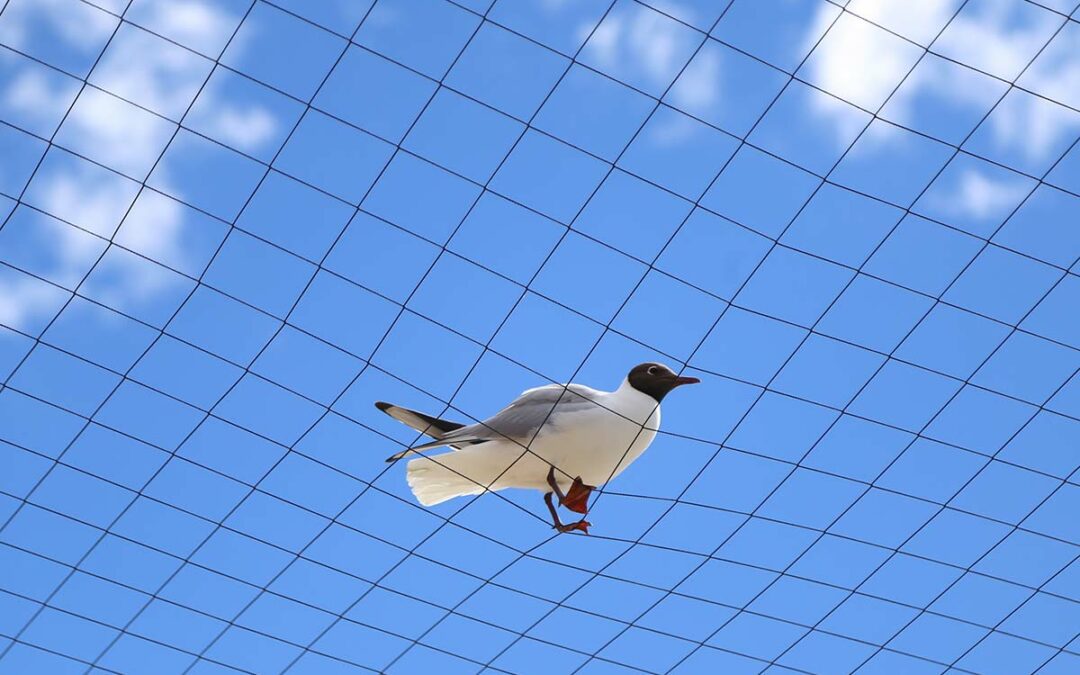
by Pigeon Patrol | Apr 30, 2025 | Animal Deterrent Products, Bird Deterrent Products, Bird Spike, Bird Trap, Pigeon Control, Pigeon Patrol's Services, Pigeon Spikes, Pigeons, Sparrows
Unwanted birds on your roof, signs, balconies, or vents can go from annoying to damaging very quickly. Bird control is essential for keeping your property clean, safe, and structurally sound—without causing harm to the birds.
In this article, we’ll walk you through the most effective bird control strategies, when to use them, and how to select the right products to protect your property from pigeons, seagulls, sparrows, and more.
Why Is Bird Control Necessary?
1. Prevent Property Damage
Birds may be light, but their damage is heavy:
- Acidic droppings corrode metal, paint, and concrete.
- Nesting debris clogs gutters and damages HVAC units.
- Woodpeckers can drill into siding and cause rot.
2. Reduce Health Risks
Bird droppings carry over 60 transmittable diseases, including:
- Histoplasmosis
- Cryptococcosis
- E. coli
3. Improve Cleanliness & Aesthetics
Bird infestations create a messy, foul-smelling environment for visitors, tenants, or customers.
Top Bird Control Methods That Work
1. Bird Spikes – The Physical Barrier
Bird spikes create an unwelcoming surface that makes it impossible for birds to land or roost.
Ideal for:
- Window sills
- Rooftops
- Ledges
- Signs
Get Bird Spikes Here: https://www.pigeonpatrol.ca/bird-spikes/
3. Bird Netting – Area-Wide Protection
Bird netting is perfect for blocking access to covered spaces.
Ideal for:
- Balconies
- Loading docks
- Solar panels
- Warehouse ceilings
Shop Bird Netting: https://www.pigeonpatrol.ca/bird-netting/
4. Ultrasonic Bird Repellers – Tech Meets Nature
These electronic devices emit high-frequency sounds that are disturbing to birds but silent to humans.
Ideal for:
- Residential patios
- Outdoor seating
- Rooftop HVAC units
Browse Ultrasonic Repellers: https://www.pigeonpatrol.ca/bird-repeller/
Bird Control Services for Different Properties
Residential Bird Control
Protect your home, attic, balcony, or garden from unwanted birds. Recommended solutions:
- Bird spikes on window sills
- Netting under solar panels
- Motion-activated sound deterrents
Commercial Bird Control
Keep storefronts, signage, awnings, and entryways free of birds to maintain a clean, professional image.
- Install spikes on signs
- Use netting in open rafters
- Install repellers near parking lots
Industrial and Agricultural Bird Control
Large facilities require a combination of deterrents:
- Warehouse netting
- Grain silo protection
- Rooftop barriers and sound repellers
Types of Birds That Require Control
- Pigeons – Nest on rooftops, ledges, and balconies
- Seagulls – Common near coastal areas and landfills
- Sparrows & Starlings – Nest in vents and overhangs
- Woodpeckers – Damage wood siding and trees
- Crows & Magpies – Raid garbage and food courts
How to Choose the Right Bird Control Product
| Problem Area |
Recommended Solution |
| Rooftop or Ledge |
Bird Spikes |
| Large Covered Space |
Bird Netting |
| Outdoor Seating |
Ultrasonic Repeller |
| Fence or Balcony Railing |
Fence Spikes |
| Persistent Infestation |
Pigeon Trap |
💡 Tip: Combine two or more products for maximum effectiveness.
What is the most effective bird deterrent?
Bird spikes and netting are the most reliable physical barriers, especially when combined with ultrasonic devices.
How long do bird control systems last?
High-quality systems like those from Pigeon Patrol are built to last 5–10+ years with proper installation.
Are bird control solutions safe for children and pets?
Yes! Our deterrents are non-toxic, humane, and pet-safe.
Can I install bird control products myself?
Yes, many products like spikes and ultrasonic devices are DIY-friendly, but netting and large systems are best professionally installed.
Bird control is more than just stopping birds—it’s about protecting your property, reputation, and peace of mind. From pigeon-proofing your rooftop to installing ultrasonic repellents in your garden, Pigeon Patrol offers everything you need to stop birds humanely and permanently.

by Pigeon Patrol | Apr 30, 2025 | Animal Deterrent Products, Bird Deterrent Products, Bird Spike, Bird Trap, Pigeon Control, Pigeon Patrol's Services, Pigeon Spikes, Pigeons, Sparrows
Birds might be beautiful in the wild—but not when they’re roosting on your roof, business sign, or solar panels. Whether you’re a homeowner dealing with pigeons or a commercial property manager dealing with a larger infestation, professional bird control services are your best defense against property damage, health risks, and daily mess.
This guide will show you how bird control services can help and which deterrent solutions are best for long-term prevention.
Why Bird Control Services Are Important
1. Birds Cause Expensive Property Damage
From clogged gutters to corroded paint and broken roof tiles, pigeon and seagull droppings are acidic and incredibly destructive.
2. Health Hazards from Droppings and Nests
Birds carry parasites, bacteria, and fungi. A build-up of droppings can lead to:
- Histoplasmosis
- Salmonella
- Cryptococcosis
3. Businesses Suffer Image and Revenue Losses
No customer wants to walk under a bird-infested awning. Droppings, noise, and feathers drive away foot traffic and create bad impressions.
What Do Bird Control Services Include?
1. Site Inspection & Risk Assessment
Experts assess where birds are roosting or nesting, identify entry points, and evaluate what type of deterrent is needed.
Ultrasonic Bird Repellers
Silent and discreet, these devices emit sound frequencies that annoy and repel birds without bothering people or pets.
Check Out Ultrasonic Repellers: https://www.pigeonpatrol.ca/bird-repeller/
Bird Control Services for Different Properties
Residential Bird Control
Protect your home, attic, balcony, or garden from unwanted birds. Recommended solutions:
- Bird spikes on window sills
- Netting under solar panels
- Motion-activated sound deterrents
Commercial Bird Control
Keep storefronts, signage, awnings, and entryways free of birds to maintain a clean, professional image.
- Install spikes on signs
- Use netting in open rafters
- Install repellers near parking lots
Industrial and Agricultural Bird Control
Large facilities require a combination of deterrents:
- Warehouse netting
- Grain silo protection
- Rooftop barriers and sound repellers
Common Bird Species We Handle
- Pigeons – The #1 urban pest bird
- Seagulls – Aggressive near coastlines and food courts
- Starlings & Sparrows – Nest in vents and eaves
- Woodpeckers – Cause damage to wooden siding
We even offer specific deterrents like the Woodpecker Deterrent Kit
Are your bird control products safe for pets and children?
Yes! All of our deterrents are non-toxic and pet-friendly.
Do I need professional installation?
We recommend professional installation for netting and ultrasonic devices, but many products are DIY-friendly.
Can I use bird control services in winter?
Absolutely. In fact, winter is a great time to prepare for spring nesting season.
If you’re tired of bird droppings, nesting mess, or constant cleaning—it’s time to call the experts. Bird control services provide lasting protection, safeguard your health, and preserve your property’s value. Whether you’re in residential, commercial, or industrial spaces, Pigeon Patrol has a solution tailored to your needs.
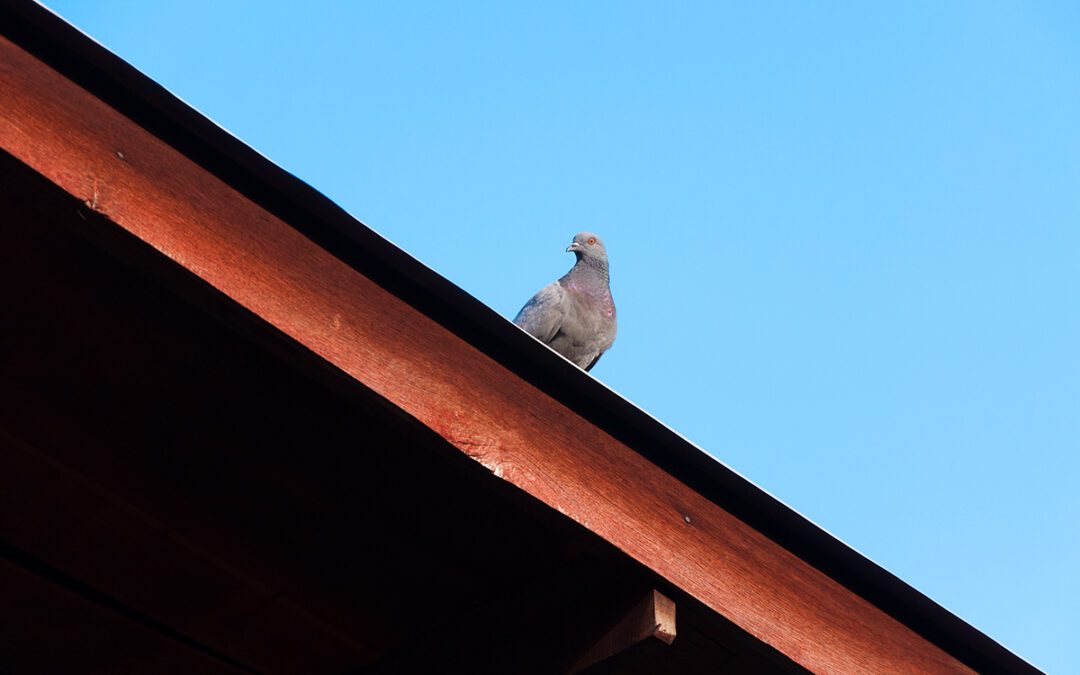
by Pigeon Patrol | Apr 30, 2025 | Animal Deterrent Products, Bird Deterrent Products, Bird Spike, Bird Trap, Pigeon Control, Pigeon Patrol's Services, Pigeon Spikes, Pigeons, Sparrows
You’ve likely heard them cooing, seen the droppings, or watched them strut across your rooftop like they own the place. Pigeons love roofs, and once they settle in, they can cause serious property damage, health hazards, and noise pollution. The good news? There are effective and humane methods to get rid of pigeons on your roof—and keep them away.
Let’s walk you through the best pigeon control strategies, the tools you’ll need, and how to pigeon-proof your roof for good.
Why Pigeons Choose Roofs to Roost
- Elevated & Safe
Roofs give pigeons a great vantage point to spot food, avoid predators, and nest in peace.
- Warm and Dry
Roof vents, eaves, and solar panels offer sheltered nesting areas year-round.
- Access to Nearby Food
Urban rooftops are usually near dumpsters, restaurants, and gardens, making them pigeon hotspots.
The Problems Pigeons Cause on Roofs
- Corrosive Droppings – Their acidic waste eats through shingles, solar panels, and metal fixtures.
- Blocked Gutters – Nesting materials clog drainage, causing leaks and water damage.
- Fire Hazards – Pigeons nest in vents and chimneys, increasing fire risks.
- Health Risks – Droppings spread harmful bacteria, fungi, and parasites.
How to Get Rid of Pigeons on Roof – Step-by-Step
Step 1: Remove Food and Water Sources
Start by eliminating anything that attracts pigeons—open garbage bins, bird feeders, standing water.
Step 3: Use Bird Netting to Block Nesting Areas
Install bird netting under eaves, solar panels, or awnings to keep pigeons from nesting.
Explore Bird Netting Options: https://www.pigeonpatrol.ca/bird-netting/
Tips for Long-Term Pigeon Prevention
- Inspect your roof regularly for signs of nesting or droppings.
- Seal roof openings and gaps where birds can enter.
- Reapply repellents or reposition decoys every few months to keep pigeons guessing.
- Work with professionals like Pigeon Patrol’s bird control experts for large infestations.
Will bird spikes hurt pigeons?
No. Bird spikes are designed to deter—not injure—pigeons. They’re 100% humane.
Do ultrasonic bird repellers work on roofs?
Yes. When mounted properly, ultrasonic devices can be highly effective for roof applications.
Can pigeons come back after deterrents are installed?
Not likely—if you install a combination of spikes, netting, and sound deterrents, pigeons will move elsewhere.
How often should I clean my roof to deter pigeons?
We recommend monthly inspections and cleaning, especially during nesting season (spring/summer).
What’s the best pigeon repellent for roof vents?
Use netting or spikes around roof vents to prevent nesting.
Getting rid of pigeons on your roof doesn’t have to be a nightmare. With the right tools—bird spikes, netting, ultrasonic devices, and fence spikes—you can protect your property humanely and effectively. Trust Pigeon Patrol, British Columbia’s leader in bird control solutions, to help you get the job done.







